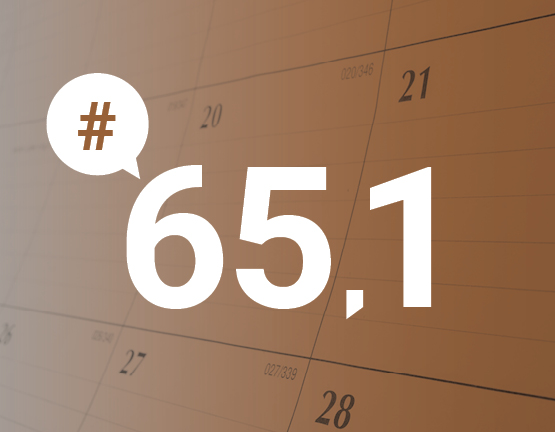While systematic saving is generally deemed to be preferable as a way of optimizing retirement capital, the months of January and February are still often associated with “RRSP season.” Almost two years after the start of a pandemic that could well have thrown a wrench into many people’s plans, let’s take advantage of this “season” to look at where Canadians stand in terms of financial preparedness for retirement.
A few statistics provide an overview.
Infographic: How ready are we for retirement?
Canadians and retirement in 5 points.
- The pandemic seems to have held back plans: Canadian investors say that they have put less money aside for retirement, and more of them are thinking about retiring later. Almost 23% report that the pandemic has put a crimp in their plans.
- First graph: Percentage of Canadians who expect to retire later than age 65. This percentage rose from about 12% to about 21% between 2019 and 2021.
- Second graph: Percentage of their income that Canadians have set aside for RRSP contributions. Between 2020 and 2021, the percentage of Canadians who are not planning to make an RRSP contribution rose from 58% to 63%.
- Few Canadians are covered by an employer pension plan: In 2019, 37% of Canadians benefited from an employer-sponsored pension plan, versus 46.1% in 1977.
- Table giving the number of registered pension plans in force in 2019, by province. Ontario ranks first with 2,473,780 plans. Quebec is second with 1,577,919.
- Table giving the number of registered pension plans in force in 2019, by province. Ontario ranks first with 2,473,780 plans. Quebec is second with 1,577,919.
- Retirement savings that are likely too low… About 30% of Canadians report having no retirement savings (34% in the 45 to 65 age group). Average retirement savings per investor in Canada would be about $184,000.
- Bar graph illustrating average savings for Canadians by age, excluding real estate. For the under-35 age group, average assets total about $56,307. For the over-65 age group, the total is $318,520, with almost half in RRSPs and TFSAs and the other half in non registered investments.
- Bar graph illustrating average savings for Canadians by age, excluding real estate. For the under-35 age group, average assets total about $56,307. For the over-65 age group, the total is $318,520, with almost half in RRSPs and TFSAs and the other half in non registered investments.
- … but substantial unused contribution room: Canadians may contribute up to 18% of their earned income to an RRSP. They only use a fraction of this contribution room.
- Two circles showing the unused RRSP contribution room available to Canadian taxpayers. Per taxpayer: about $40,000 Total: almost $1 billion
- Two circles showing the unused RRSP contribution room available to Canadian taxpayers. Per taxpayer: about $40,000 Total: almost $1 billion
- Having a written financial plan could make a difference: A Fidelity Investments survey showed that, beyond the numbers, having a written plan may lead to a more satisfying retirement.
- Pie charts illustrating that 91% of people with a written plan feel optimistic about their retirement, versus 60% of people without a written plan. Overall, 68% of people feel optimistic and 32% feel pessimistic about their retirement.
Contact your financial professional to discuss your own retirement outlook.
This following sources were used to prepare this article:
Fidelity Investments, “2021 Fidelity Retirement Report.”
HOOPP, “2021 Canadian Retirement Survey.”
Benefits Canada, “Pension membership on the rise in Canada: StatsCan”; “A quarter of Canadians delaying retirement due to pandemic: survey.”
Ratehub, “What is the average saving by age in Canada?.”
Statistics Canada, “CANSIM Table 111-0040, Registered Retirement Savings Plan (RRSP) room.”




